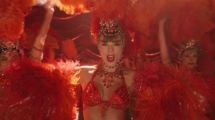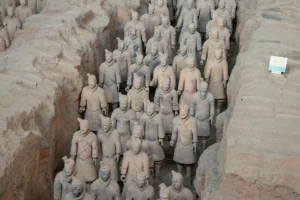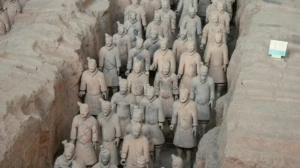Women Through the Ages: The Roles and Rights of Women in World History
Introduction
The history of women is a rich tapestry woven from diverse cultures, traditions, and experiences. From the ancient civilizations of Mesopotamia to the modern world, women’s roles have evolved dramatically over time. Understanding these changes is crucial for grasping the broader social and political developments in history. This article explores the roles and rights of women through various epochs, reflecting on the challenges they faced and the strides they made toward equality.
Ancient Civilizations
Mesopotamia and Egypt
In ancient Mesopotamia, women held various roles, from homemakers to priestesses. The Code of Hammurabi, dating back to 1754 BCE, provided some legal protection for women, granting them rights in marriage, property ownership, and business.[^1] Women could own land, inherit property, and even engage in trade. This legal framework, while far from equal, indicates an acknowledgment of women’s contributions to society.
In Egypt, women enjoyed relatively higher status compared to other ancient societies. They participated in economic activities, owned property, and had legal rights similar to men. Notably, some women ascended to power as pharaohs, such as Hatshepsut and Cleopatra, illustrating the possibilities available within a structured society grounded in both monarchy and religion.[^2]
Greece and Rome
Contrastingly, women in ancient Greece experienced significant restrictions. In city-states like Athens, they were largely confined to domestic roles, with limited access to education and public life. The philosopher Aristotle famously regarded women as inferior to men, a sentiment echoed through centuries.[^3] However, in Sparta, women enjoyed greater freedom, participating in physical training and owning property, though this was largely due to the militaristic nature of Spartan society.
In Rome, women gradually gained more rights, especially during the late Republic and early Empire. While still limited compared to their male counterparts, women could inherit property, conduct business, and engage in social life. The emergence of influential women, such as Livia, wife of Augustus, showcases that women could exert power behind the scenes.[^4]
The Middle Ages
The Role of Women in Feudal Society
During the Middle Ages, women’s roles varied significantly across Europe. In feudal society, women were often viewed in the context of their husbands and fathers. Their primary responsibilities revolved around the household and child-rearing, though some noblewomen wielded power, managing estates in the absence of their husbands.[^5] The concept of chivalry also elevated the status of women as symbols of virtue, leading to romanticized notions but often reinforcing their subordination.
Religious Influences
Religion played a pivotal role in shaping women’s lives. Christianity and Islam, emerging during this period, presented complex views on women. While both religions emphasized moral conduct and spirituality, interpretations often led to restrictive practices. In Christianity, figures like the Virgin Mary provided a model of purity and virtue, marginalizing women’s roles outside motherhood.[^6] Islamic teachings offered women certain rights, such as inheritance and education, although cultural practices often overshadowed these rights in various regions.
The Renaissance and Enlightenment
Rebirth of Learning
The Renaissance sparked a renewed interest in humanism, challenging traditional views, including those regarding women. Educational opportunities began to expand, leading to the rise of prominent female figures in literature, art, and science. Women like Christine de Pizan advocated for women’s education and rights, critiquing patriarchal structures entrenched in society.[^7]
Enlightenment Ideals
The Enlightenment further advanced discussions about gender equality. Philosophers such as Mary Wollstonecraft argued for women’s rights and education,[^8] suggesting that societal progress depended on the inclusion of women in intellectual pursuits. This period laid the groundwork for feminist thought, questioning the established norms that relegated women to secondary status.
The 19th Century: The Rise of Feminism
The Suffragette Movement
The 19th century marked a significant turning point in the fight for women’s rights, particularly in the Western world. The suffragette movement emerged, demanding women’s right to vote and participate fully in society. Figures like Susan B. Anthony and Emmeline Pankhurst campaigned tirelessly for these rights, using protests, demonstrations, and civil disobedience as tools of advocacy.[^9]
Educational Opportunities
This era also saw an increase in women’s access to education. Institutions began to open their doors to women, leading to increased literacy rates and the emergence of women in professional fields, such as teaching and nursing. The establishment of women’s colleges played a crucial role in this development.[^10]
The 20th Century: Progress and Setbacks
World Wars
The two world wars dramatically altered women’s roles in society. With men conscripted into military service, women stepped into roles traditionally held by men, taking on jobs in factories, offices, and as nurses on the front lines. This shift demonstrated women’s capabilities and challenged pre-war notions of gender roles.[^11]
The Second Wave of Feminism
The post-war period saw the rise of second-wave feminism in the 1960s and 1970s, focusing on workplace equality, reproductive rights, and sexual liberation. Landmark legal decisions, such as Roe v. Wade in 1973, recognized women’s right to make choices about their bodies, marking a pivotal victory in the movement for gender equality.[^12]
The 21st Century: Continuing the Fight
Global Perspective
In the 21st century, the roles and rights of women continue to evolve, albeit with significant variations globally. In many Western countries, women enjoy legal rights and protections against discrimination. However, gender-based violence, wage gaps, and underrepresentation in politics remain pressing issues. Activism addressing these concerns has led to movements like #MeToo, calling attention to sexual harassment and assault.[^13]
Women and Intersectionality
Modern feminism has increasingly embraced intersectionality, recognizing that women’s experiences differ based on race, class, and sexual orientation. This inclusive approach seeks to address the unique challenges faced by marginalized groups, enabling a broader understanding of women’s rights and roles.[^14]
Conclusion
The historical journey of women reflects a complex interplay of social, economic, and political factors. Women have fought tirelessly for their rights, often against formidable odds, contributing significantly to societal development throughout history. While substantial progress has been made, continued advocacy and education are essential for advancing gender equality globally. The lessons from the past inspire present and future generations to continue this vital work.
[^1]: "The Code of Hammurabi: A New Translation." Ancient Near East Texts, 2015.
[^2]: M. S. Verma, "Women in Ancient Egypt: Role and Influence," Journal of Historical Studies, 2017.
[^3]: N. C. Craig, "Gender in Ancient Greece." Historical Perspectives, 2003.
[^4]: R. G. Collins, "Women in Ancient Rome," Roman Society Journal, 2009.
[^5]: E. Smith, "The Role of Women in Feudal Society," Medieval Studies Revisited, 2011.
[^6]: K. W. Anderson, "Christianity and Women," Retrospectives in Religious Studies, 2014.
[^7]: C. de Pizan, "The Book of the City of Ladies," 1405.
[^8]: M. Wollstonecraft, "A Vindication of the Rights of Woman," 1792.
[^9]: L. M. Harrington, "The Suffragette Movement," Women’s History Review, 2016.
[^10]: J. E. Smithson, "Women’s Education in 19th Century America," Educational Foundations Journal, 2015.
[^11]: A. D. Brown, "Women in World War II," Military History Journal, 2018.
[^12]: C. K. Johnson, "Roe v. Wade: A Landmark Decision," American Law Review, 2019.
[^13]: M. A. L. Cruz, "The #MeToo Movement and Its Impact," Journal of Social Movements, 2020.
[^14]: P. T. Roberts, "Intersectionality in Feminism," Feminist Theory Studies, 2021.
This article provides an overview of the historical roles and rights of women across different epochs, capturing the multifaceted experiences that define women’s history. While it touches upon significant themes, there is a wealth of knowledge that can expand upon each section, allowing for a deeper understanding of women’s contributions throughout time.


























Add Comment